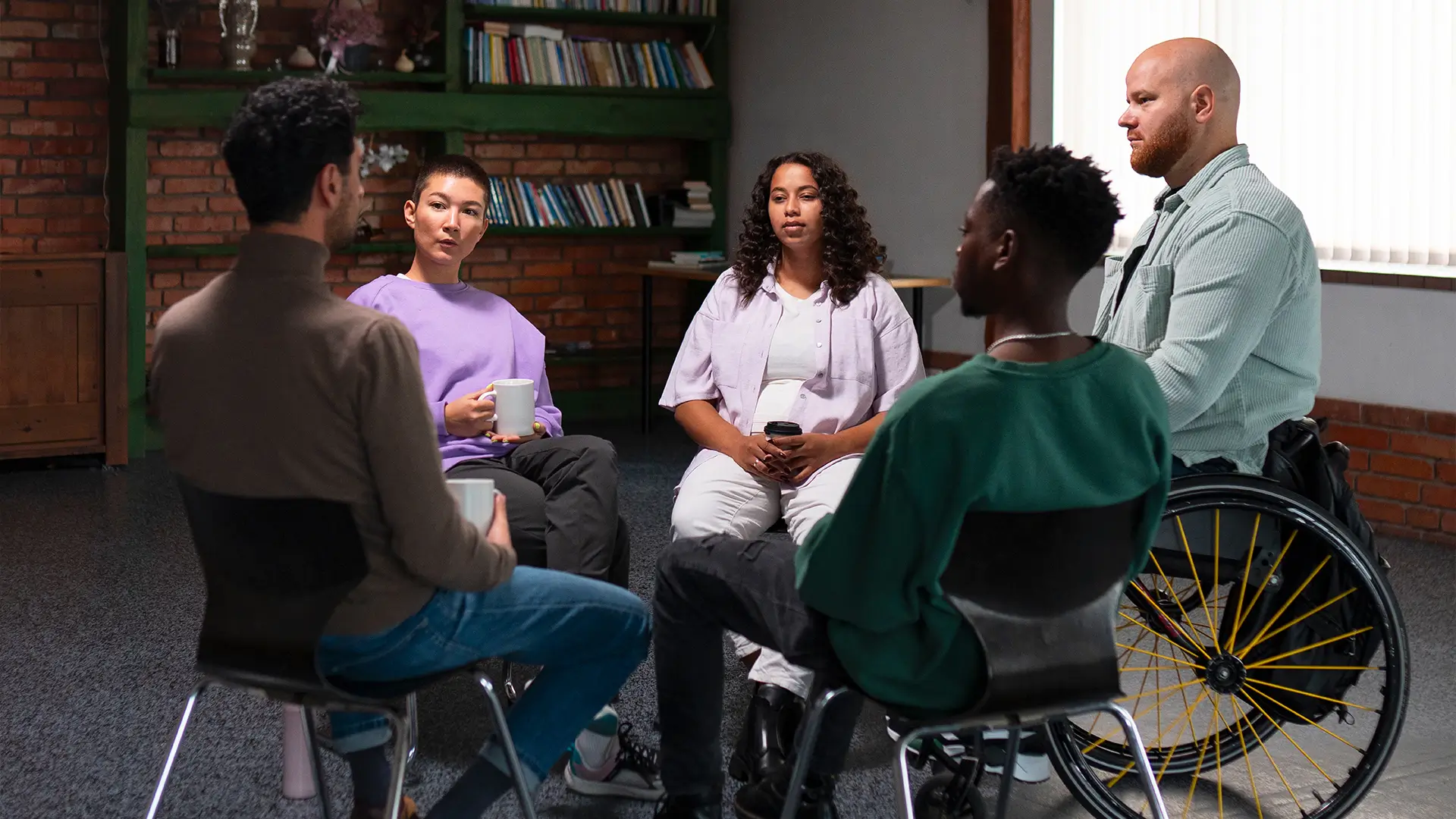Introduction
Social devaluation is a term made up by a sociologist named Erving Goffman. It means that some people are treated as less important or valuable because of who they are. This can happen because of things like having a disability, getting older, being a different race, or being a woman.
People with disabilities are one group that often gets treated this way. Social devaluation has a big impact on them. It makes it hard for them to show and use all of their abilities.
This blog is all about looking closely at this problem and finding ways to stop it. We want to make sure everyone is included and treated equally in our society. Let’s start talking about it!
What Exactly Does Social Devaluation Mean?
Social devaluation or ‘stigma’ happens when people are treated as less valuable because of a specific thing about them that society doesn’t like. It’s like society looks down on that particular thing, and as a result, people who have it get treated unfairly. Social devaluation is what creates these unfair beliefs in society, making some individuals feel less accepted just because of something others don’t like.
Some examples of social stigmas that come from social devaluation include:
Mental Illness: People with mental health issues often face discrimination. However, in Australia, there are laws against treating them unfairly. For example some laws which stop employers from discriminating against people with mental or intellectual disabilities.
Physical Disabilities: Conditions like obesity and learning disabilities can also lead to unfair treatment because of societal biases.
Sexual Orientation: Some people face discrimination because of who they’re attracted to or their gender identity. This is called homophobia or transphobia. Laws and efforts aim to prevent such unfair treatment.
What Is the Impact of Social Devaluation on Individuals With Disabilities?
When a group of people is looked down upon by society because of something they have in common, it brings a lot of problems. Let’s look at some of the issues:
a.) Talent Costs:
- People with disabilities often face difficulties in communicating. This includes problems with hearing, speaking, reading, writing, and understanding things.
- There are also rules, policies, or ways of doing things that make life harder for people with disabilities. For example, public transportation may not be accessible to them. This makes it tough for them to be a part of everyday activities in the community.
b.) Barriers for Individuals with Disabilities:
- People with physical disabilities and good intelligence still have to deal with many obstacles. These include how society generally treats them, rules that don’t include them, places that are hard for them to access (like buildings without ramps), and workplaces that don’t have policies to support them.
- All these obstacles end up costing society more because of its unfriendly attitude towards people with disabilities.
- To make things better, we need to learn to be understanding and kind to those with physical or mental disabilities. It’s about fostering compassion and humility in our society. There’s a lot of work to be done if we want everyone to be treated equally. Are you ready to help spread the word?
What Is the Toll on Mental Well-Being Due to Social Devaluation?
People with disabilities not only deal with daily challenges and society treating them poorly, but they also often feel stressed, anxious, and even depressed.
Feeling left out and isolated can make their mental health struggles even worse, adding to the difficulties they already face because of their disability. In simple terms, society ends up paying a price for the mental well-being of people with disabilities. It’s like a chain reaction where one problem leads to another.
What Are the Consequences in Terms of Missed Opportunities?
Some studies have shown that disabled children and adults who have lower levels of education may struggle more to find good jobs compared to non-disabled people. This makes it harder for them to earn money and adds extra financial pressure on both the individuals and society.
Going to traditional universities or colleges can be more expensive than attending vocational schools, which are more accessible. Unfortunately, many places don’t have proper support, like ramps for people in wheelchairs or closed captioning for those who need it.
This lack of support creates barriers that make it difficult for people with disabilities to succeed. As a result, they miss out on opportunities to improve their own lives and contribute to society.
What measures can be taken to reduce social devaluation for individuals with disabilities?
To make society more inclusive and fair, we need to actively appreciate and include people with disabilities. For example, we should welcome all kinds of differences in our schools so that everyone feels a part of the larger community. We should also push for more support systems, like ramps or closed captioning, to make sure everyone’s needs are met.
To tackle this issue, we have to get rid of certain obstacles:
Attitude Barriers: Some people only see the disability when they interact with someone who has one. This leads to problems like having fixed ideas, bullying, unfair treatment, and fear. We need to change our attitudes to be more accepting and understanding.
Environmental Barriers: Sometimes, places are built without thinking about the needs of people with disabilities. This makes these places hard to access for them. We should design our surroundings, workplaces, and public spaces with everyone in mind so that they are easy for everyone to use.
Conclusion
In conclusion, when society looks down on people with disabilities, it creates many problems. This unfair treatment makes it hard for them to show their abilities, affects their mental well-being, and limits their chances for good jobs and education. To fix this, we need to be more accepting, remove obstacles like negative attitudes, and design places that are accessible to everyone. By doing this, we can build a fair and inclusive society where everyone, no matter their abilities, can have a chance to do well.
FAQ's
Social devaluation means treating some people as less important or valuable because of certain aspects like having a disability, getting older, being a different race, or being a woman.
People with disabilities often face challenges in showing and using their abilities due to social devaluation. It creates barriers in education, employment, and daily life, making things tougher for them.
Mental illness, physical disabilities, and discrimination based on sexual orientation are examples of social stigmas. There are laws that aim to prevent unfair treatment, especially in the workplace.
Social devaluation results in talent costs, communication difficulties, and barriers to daily activities. It adds stress and mental health struggles, impacting the overall well-being of people with disabilities.
To reduce social devaluation, we need to be more understanding and kind to those with disabilities. It involves encouraging kindness, changing attitudes, and removing environmental barriers by designing accessible spaces and advocating for support systems like ramps or closed captioning.



